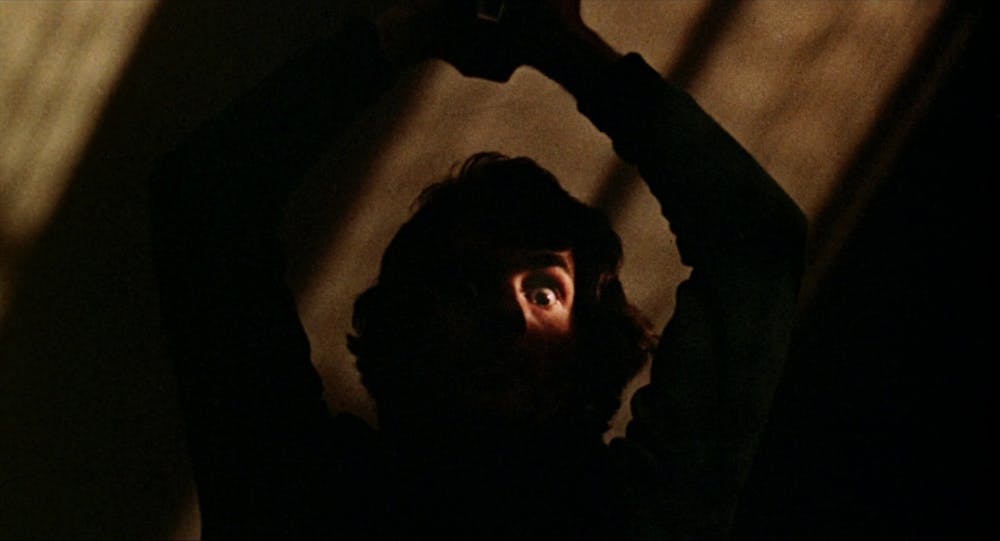Slasher films are a subgenre popular throughout the 1970s and 80s that seemingly died out after being exhausted of all possibilities. However, recent filmmakers are bringing slashers back.
Tropes of old have been brought back to life again with films like “Bodies Bodies Bodies” and “Hell Fest.” The Slasher is once again cemented as a staple in the horror genre.
The origins of slasher films
Although not referred to as one at the time, Alfred Hitchcock’s “Psycho” is considered one of the foundations of what is now called Slasher films.
“Psycho,” released in 1960, is the story of Marion Crane (Janet Leigh) and her short visit to the Bates Motel. The film terrified audiences at the time with serial killer Norman Bates (Anthony Perkins) and his terrifying psychology.
The film’s editing techniques and censoring allowed it to evade the Hays Code –– a strict guideline that heavily censored sexual and violent themes within Hollywood.
In 1968, the Hays Code was abolished, and an increase in violent and sexual themes popped up in movies, including in the horror genre.
“The Texas Chainsaw Massacre” was released in 1974 along with “Black Christmas.” Both have been inspirations for what would become some of the most popular slashers of today.
The Golden Age
The iconic “Halloween” was released in 1978 and inspired prominent Slasher films, including “My Bloody Valentine” and “Prom Night.”
The tropes of slashers were also cemented in this era.
The “Final Girl” trope are the pure, shy girls who see through the killer and outsmart them, sometimes being the ones to defeat the killer themselves. The “Final Girl” is embodied by Jamie Lee Curtis’ character Laurie Strode in “Halloween.”
The trope moved into other genres like the science-fiction horror film “Alien,” with Signourey Weaver as Ripley.
The most famous Slasher film killers have notorious masks that hide their identities, like Jason from “Friday the 13th” or the iconic “Scream” mask.
In the 1990s, slashers started to fade as a genre. The “Scream” franchise was considered one of the last greatest slashers before the genre devolved in the 2000s. Filmmakers exhausted their creativity and were moving towards the more violent splatter film genre and hopping on the wave of footage films following “The Blair Witch Project” in 1999.
In an age of revival
After the horror genre’s decline in the 90s and a desperate need for a bounce back, slashers have risen from the dead. While films like “Halloween” and “Scream” were remade, new films use traditional characteristics of slashers as part of their charm and give the films a twist.
The “Fear Street Trilogy” takes place in three different time genres, using horror tropes like witch trials and a summer camp killing to explain their cursed town.
Ti West’s “X” trilogy is another that follows two characters in a story of stardom, one failed and one achieved. “Happy Death Day” uses the “Groundhog Day” trope of reliving the same day over and over, except the day is of protagonist Tree Gelbman’s (Jessica Rothe) death.
These films still have women at the forefront, but try to subvert the idea of making them a “Final Girl,” expanding the characters to be more than pure as they were in the past.
The “X” trilogy explores the exploitation of women in the film industry and “Fear Street” features their two main characters, both women, in a strained relationship throughout the films.
These new themes in Slashers allow for characters to be multidimensional while still sticking with what made the genre popular. These changes are small but reflect a growing passion in new horror filmmakers who grew up with the original Slasher and are trying to live up to its legacy.
This article was edited by Alife Pritchard, Marina Zaczkiewicz and Abigail Turner. Copy editing done by Luna Jinks, Ariana Kavoossi, Emma Brown and Charlie Mennuti.





